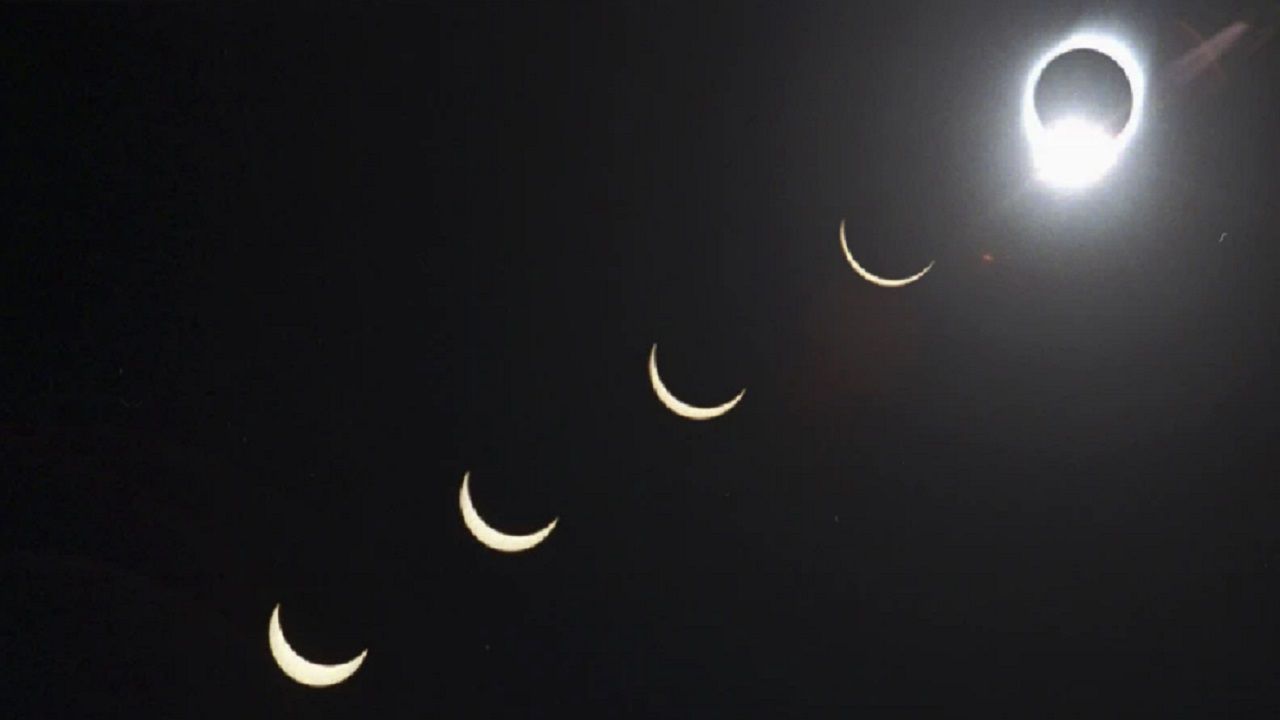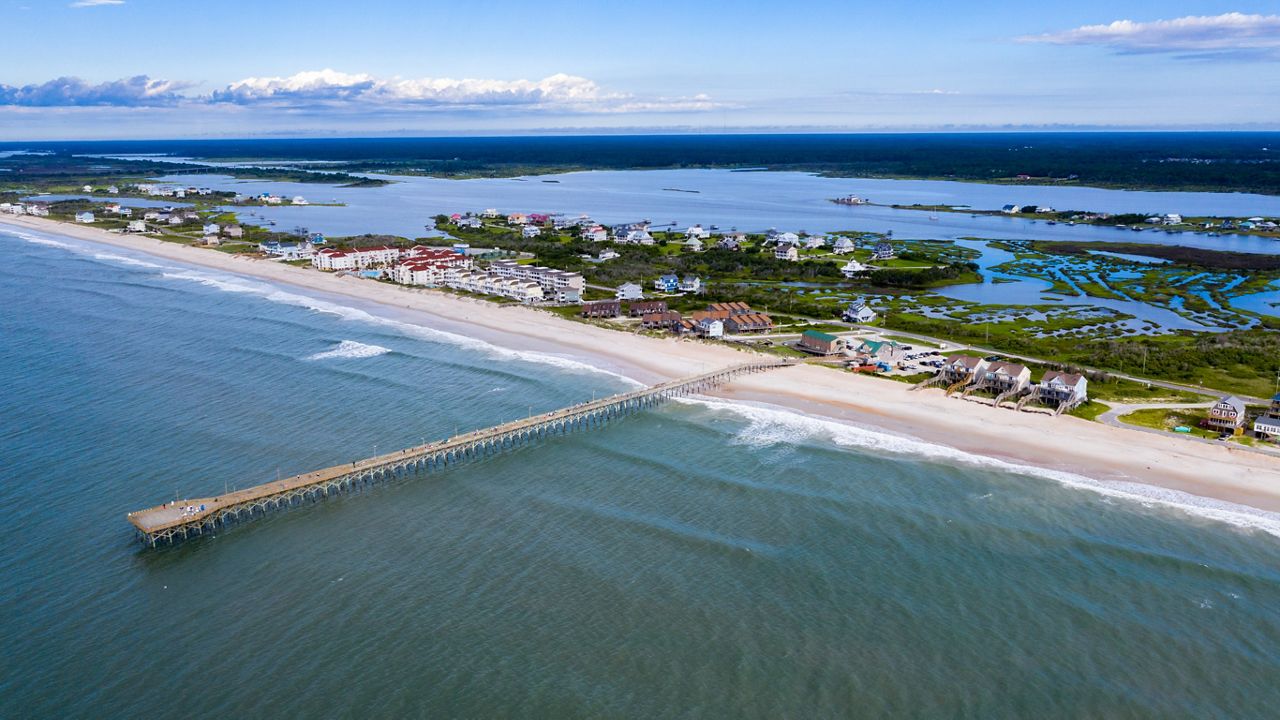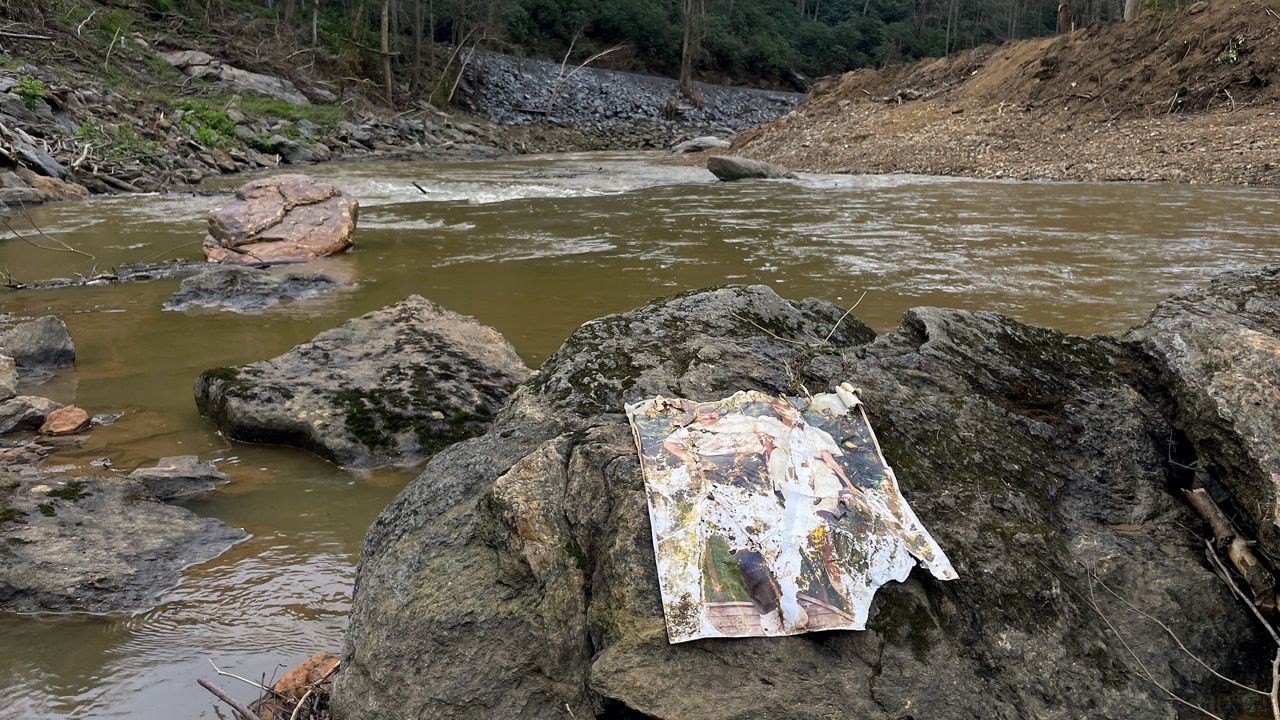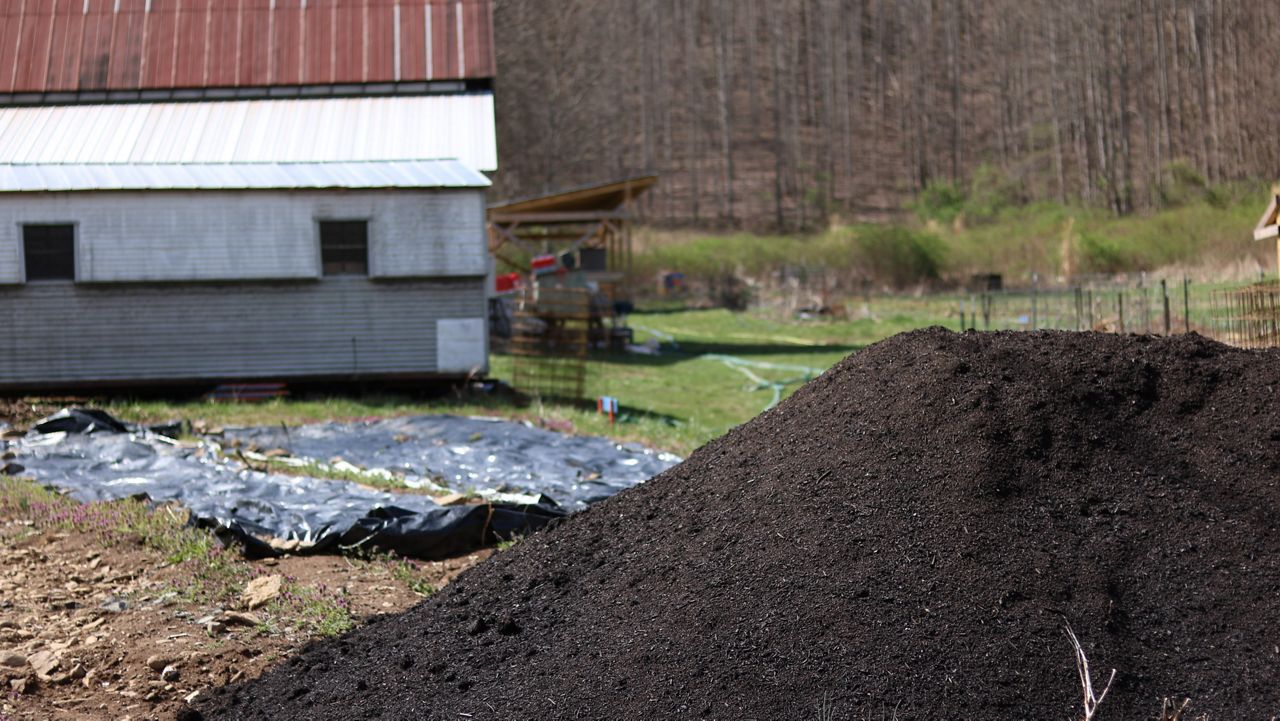North Carolina will see between 70% and 86% of the sun disappear from view on Monday during the solar eclipse.
North Carolina has seen three total or annular solar eclipses since 1950 and will see another total solar eclipse in 2078 but only part of the sun will be blocked by the moon across the state in this year's eclipse.
Regardless, if you know what to expect and are wearing the right equipment you might see a treat on Monday!
On Monday afternoon, the partial solar eclipse will begin at approximately 1:47 p.m. in western North Carolina and conclude in northeastern parts of the state around 4:30 p.m.
The maximum of the eclipse, or when most of the sun will be obscured will take place between 3:06 p.m. and 3:20 p.m. so that will be the best time to try to view the event.
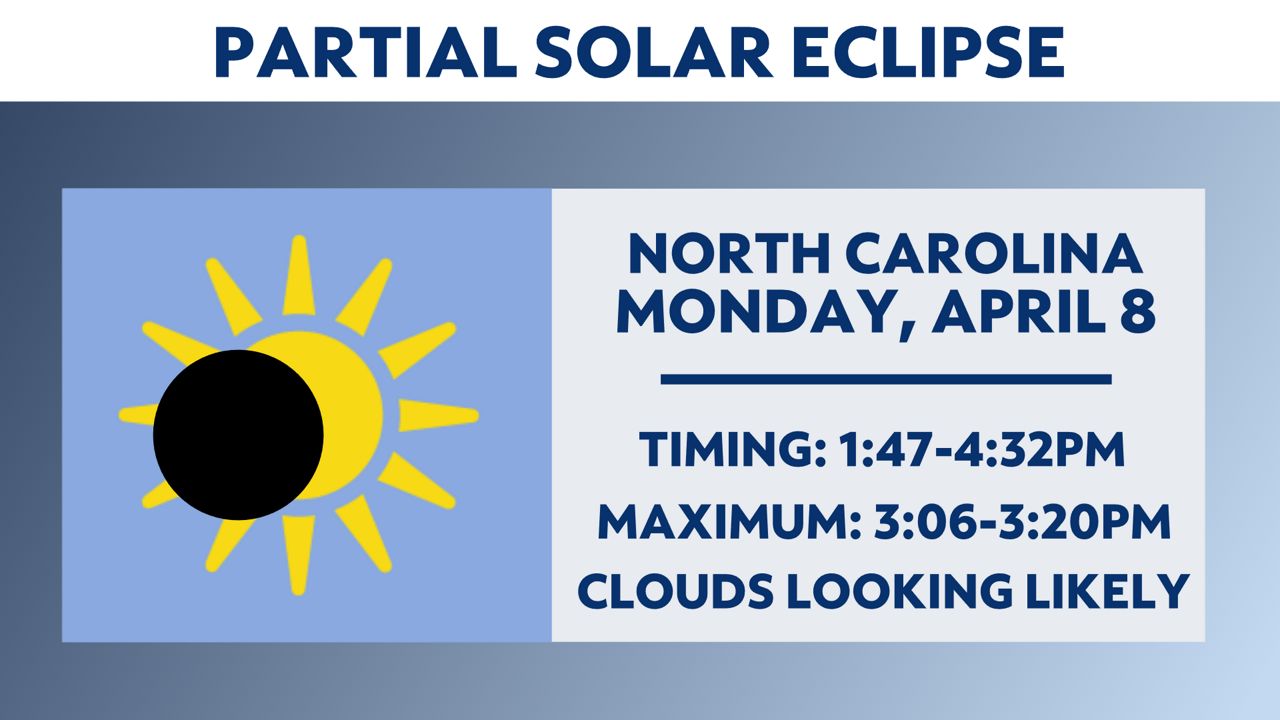
The moon's shadow will travel from Texas to Maine Monday afternoon, giving those areas an entirely different experience.
Those along the path of totality are going to be directly underneath the moon's shadow, which will result not only in more darkness but a drop in temperature as well.
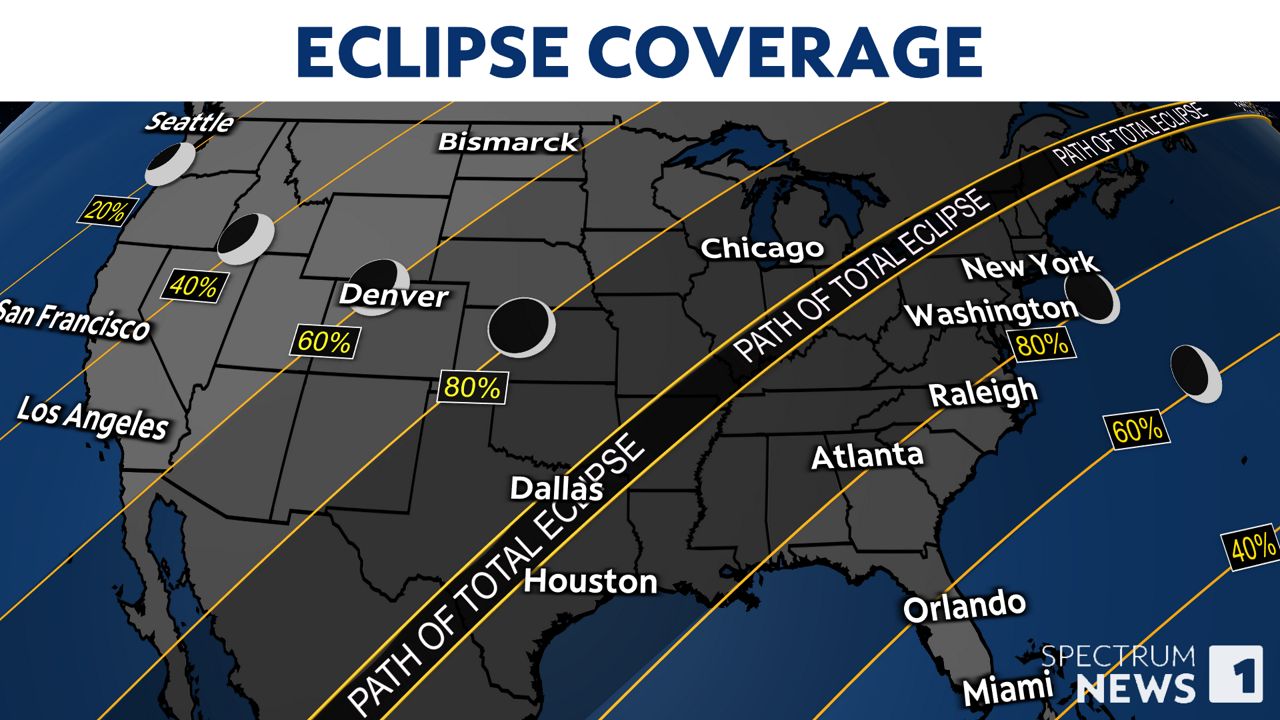
Unfortunately, much of the Southern Plains will be dealing with a chance for rain and clouds, and some clouds will be possible for North Carolina as well.
Currently, we're seeing clouds north and west of I-85 those across Raleigh and the Triangle, over Charlotte, the Sandhills and all of eastern North Carolina are getting a great view.
.gif)
You cannot use sunglasses to view the eclipse because sunlight will still be strong enough to damage eyesight. Instead, you can use solar eclipse glasses to view the event.
Eclipse safety experts suggest glasses that block out all UV light from the sun and nearly all visible light, so when worn indoors, bright lights are only faintly visible.
Be sure to buy your solar eclipse glasses from a reputable vendor.
Our team of meteorologists dives deep into the science of weather and breaks down timely weather data and information. To view more weather and climate stories, check out our weather blogs section.





